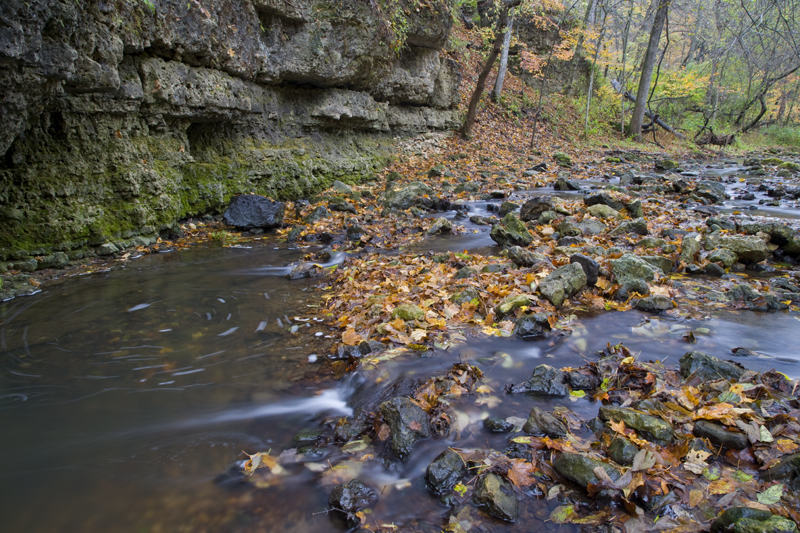Who Will Carry On?
By Taylor on January 2, 2015 in Blog
NATURALLY SPEAKING by Steve Lekwa
 Doug Wood, a favorite Minnesota songster, sings a song with some important questions: “Who will love the land? Who will help us understand? Who will hold the sky up? Now the big trees are down.” The big trees that Doug sings about are “those who fought our fight” for the conservation of our natural heritage, but who have passed on. He sings of people like John Muir, Sigurd Olson, Rachel Carson, Aldo Leopold, and more who had a national and even world-wide audience. Iowa lost a couple of its own big trees in recent weeks, and it was my privilege to have known both of them.
Doug Wood, a favorite Minnesota songster, sings a song with some important questions: “Who will love the land? Who will help us understand? Who will hold the sky up? Now the big trees are down.” The big trees that Doug sings about are “those who fought our fight” for the conservation of our natural heritage, but who have passed on. He sings of people like John Muir, Sigurd Olson, Rachel Carson, Aldo Leopold, and more who had a national and even world-wide audience. Iowa lost a couple of its own big trees in recent weeks, and it was my privilege to have known both of them.
Bill Horine was a founding member of the Story County Conservation Board. It was Bill and a few of his Izaak Walton League friends who gathered names on a petition to place the question of whether Story County should have a conservation board on the ballot in 1960. The ballot issue passed by more than four to one in spite of one of the Board of Supervisors claiming that there was just no way that people would vote to tax themselves for conservation. Bill was named to the first five-member board in 1960 and was still serving when I was hired in 1973. He helped guide the program from an initial idea of building one big county park (Hickory Grove) to a program that manages multiple parks, preserves and wildlife areas, and became one of the first county boards in Iowa to feature conservation education services – an area where it remains a state leader today. That would be enough to make Bill a “big tree” in my book, but there was more. Much more.
Bill was an outdoorsman in his personal life and a pioneer in outdoor broadcasting on KRNT (channel 8). He became a well known outdoor writer who published stories in a variety of magazines. He really hit his stride, though, in retirement as he became a teaching naturalist. His white hair and slow, deep voice naturally caught and held people’s attention even in his 90s when he provided interpretive programs on Bald Eagles at the State Fair and could get around only in a wheel chair. He was skilled with a camera, too, and illustrated many of his programs with slides he had taken in the field. Bill led field trips and excursions here at home and as far away as Alaska and Central America. He was at his absolute best when telling stories of the outdoors he loved so deeply. In my last conversation with Bill earlier this year, he talked of building a blind next to the bird feeders outside his little apartment window at Ballard Creek Assisted Living so that he could get closer with his camera. He was 99 years old at the time.
Dr. Bob Dyas retired from the ISU Department of Landscape Architecture in 1989 after winning many awards in his teaching career. I didn’t have Bob as a professor since I was studying wildlife biology elsewhere on campus, but his influence touched me in many ways over the years as I worked with people he had taught. I’m convinced that in no small way these outstanding conservationists could trace much of their enthusiasm and dedication to time they spent with Bob Dyas. His teaching style led his students outdoors regardless of the weather. He led by example and taught not only the names of trees, shrubs and flowers, but gently showed them how to see beauty in the whole interconnected landscape. Bob was an artist with a pencil, a brush, and a camera and shared those skills with his students as they, too, learned to more deeply connect with nature.
Although Bob’s eyes began to frail him in later years, he could still identify trees by their general shapes and colors. He could still find joy and beauty in his surroundings even when he could no longer see them. It was always a joy to visit with Bob when he attended various conservation programs at the Story County Conservation Center over the years. He inspired many, and his legacy lives on in the people his students continue to inspire.
Who will hold the sky up? The answer is, of course, you and me. Big trees may fall, but each new generation must continue to fight for our natural heritage. We must become the new big trees as we help others understand how to love the land.